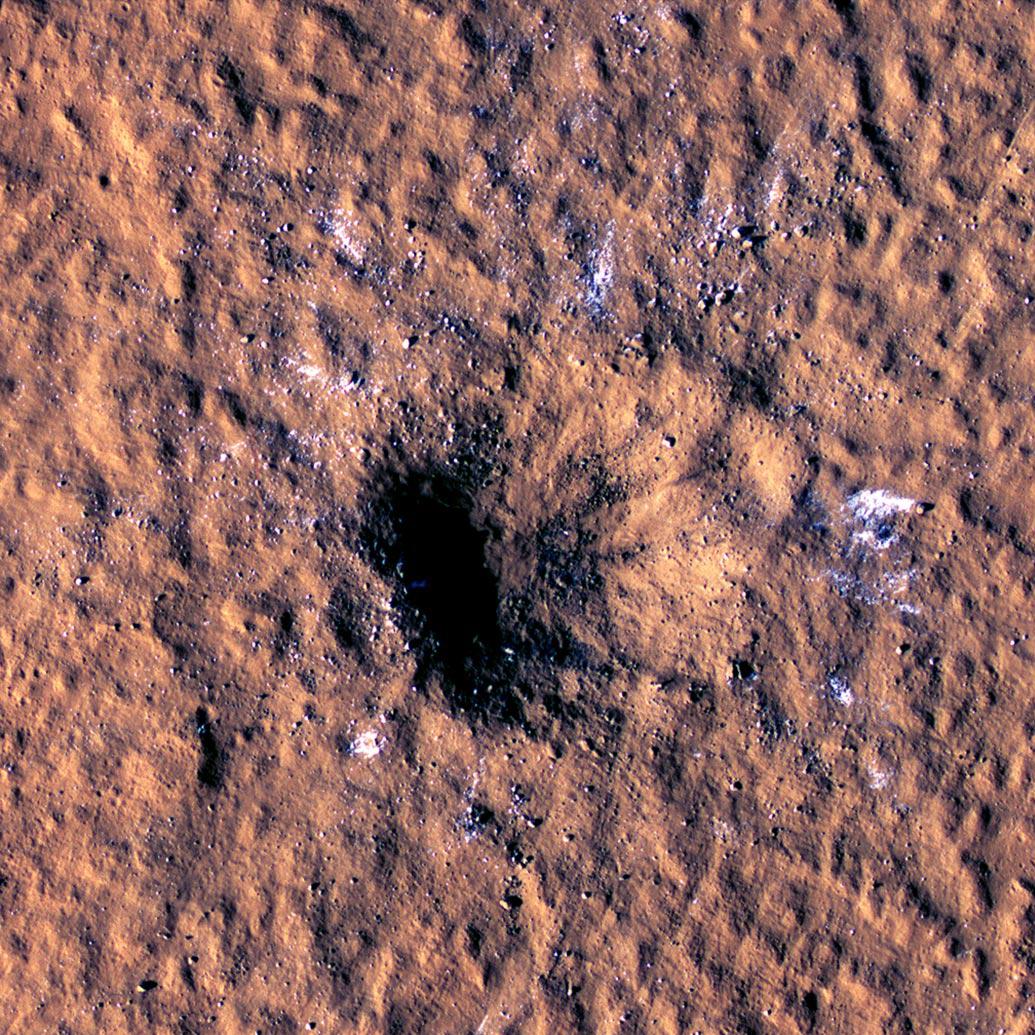

Two NASA spacecraft at Mars — one on the surface and the other in orbit — have recorded the biggest meteor strikes and impact craters yet.
The high-speed barrages last year sent seismic waves rippling thousands of miles across Mars, the first ever detected near the surface of another planet, and carved out craters nearly 500 feet (150 meters) across, scientists reported Thursday in the journal Science.
The larger of the two strikes churned out boulder-size slabs of ice, which may help researchers look for ways future astronauts can tap into Mars’ natural resources.
The Insight lander measured the seismic shocks, while the Mars Reconnaissance Orbiter provided stunning pictures of the resulting craters.
Imaging the craters “would have been huge already,” but matching it to the seismic ripples was a bonus, said co-author Liliya Posiolova of Malin Space Science Systems in San Diego. “We were so lucky.”
Mars’ atmosphere is thin unlike on Earth, where the thick atmosphere prevents most space rocks from reaching the ground, instead breaking and incinerating them.
A separate study last month linked a recent series of smaller Martian meteoroid impacts with smaller craters closer to InSight, using data from the same lander and orbiter.